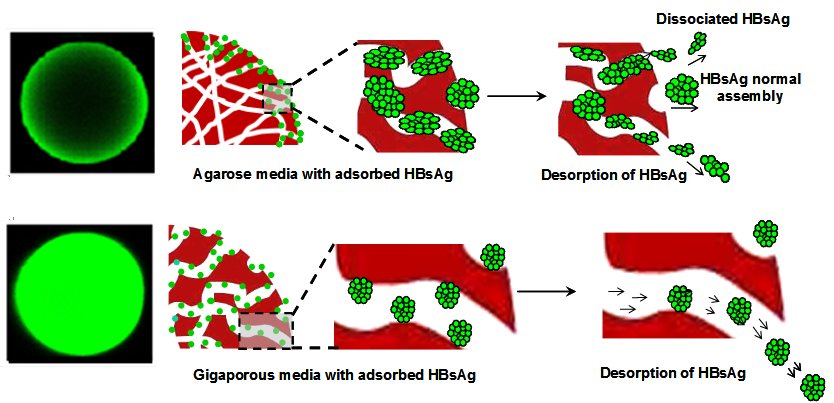Virus-like particles (VLPs) represent a class of modern vaccines that are designed specifically for prevention of virus infections. These particles are produced through cultivation of recombinant microorganisms or mammalian cells. The cultivation suspension contains very low concentration of the product and large quantities of impurities. Hence it is necessary to purify the VLPs by chromatographic methods. Unfortunately, common chromatographic packing beads have pore sizes in the range of 20-30nm which close to the size of VLPs and may cause blockage of the pores. It is a prerequisite to develop suitable microsphere beads with much greater size, i.e. >100 nm to allow the VLPs to diffuse in and out of the beads freely.
Recently, the research team led by Prof. SU Zhiguo at Institute of Process Engineering (IPE) of the Chinese Academy of Sciences, prepared gigaporous microsphere beads with pore size of 120 nm and 280 nm to investigate the effects of pore size on adsorption equilibrium, adsorption kinetics, dynamic binding capacity, and recovery of hepatitis B virus surface antigen (HBsAg) VLPs. According to the confocal laser scanning microscopy, adsorption of VLPs in commercial chromatographic beads was mostly confined to a thin shell on the outer surface, leaving the underlying pore space and the binding sites inaccessibly, while the large pores in gigaporous beads enabled the VLPs to access to the interior pore spaces by diffusion transport efficiently. Ion exchange chromatography with the gigaporous beads gained about 12 times increase in static adsorption capacity, 8 times increase in dynamic binding capacity, and 11 times increase in effective pore diffusivity. The gigaporous structure also significantly improve the stability of the VLPs during intensive adsorption-desorption process by lowing the multi-point interaction between the VLPs and binding sites in the pores.
The results have been published on J Chromatography A,2014, 1331 69– 79. Since publication in Dec of 2013, this article has been viewed or downloaded for more than 300 times measured through March of 2014.

Fig. 1 Adsorption and desorption of HBsAg VLPs in commercial agarose gel-based media and in gigaporous media. The VLPs adsorbed in agarose gel-based media with small pores were dissociated during desorption process. (Image by IPE)
 Search
Search




 京公网安备110402500047号
京公网安备110402500047号